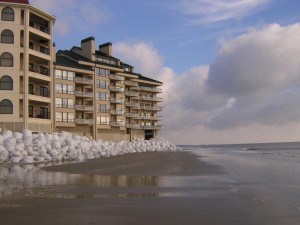Recently published paper titled Not only climate change: mobility, vulnerability and socio-economic transformations in environmentally fragile areas of Bolivia, Senegal and Tanzania by Cecilia Tacoli (2011) argues that “migration is better defined as an adaptive response to socioeconomic, cultural, political and environmental transformations, in most instances closely linked to the need to diversify income sources and reduce dependence on natural resources. Drawing on case studies in Bolivia, Senegal and Tanzania, it describes how environmental change at the local level interacts with other factors to shape migration patterns, and how such patterns in turn affect the livelihoods and resilience of individuals, households and communities in areas experiencing the impacts of climate change in the form of desertification, soil degradation, disrupted rainfall patterns and changes in temperature.”
Climate Change Adaptation
The following links provide articles about the sea-level rise published by SPUR – nonprofit organization that promotes good planning and governance in the San Francisco Bay Area. San Francisco Bay and Development Commission already expressed their concerns with the sea level rise in the Living with a Rising Bay: Vulnerability and Adaptation in San Francisco Bay and on its Shoreline report from 2009, that discusses similar concerns and adaptation strategies for confronting anticipated climate change impacts and sea-level rise in the Bay.
Sea level rise and the future of the Bay Area
Strategies for managing sea level rise
The photo from the article shows a hotel in Isle of Palms, South Carolina in attempt to keep the encroaching seas out with mounds of sea bags. (image retrieved from Panoramio)

Welcome to my blog site dedicated to my professional interests and pursuits, as well as sharing of knowledge and research experience between scholars, practitioners and all other visitors interested in climate change adaptation.
